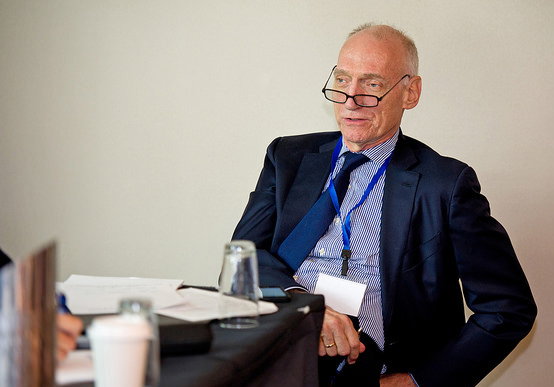Q&A With Thomas Bailey

On September 26, 2011, Thomas Bailey, director of CAPSEE, spoke with Georgia West Stacey about the launch of the Center for Analysis of Postsecondary Education and Employment.
Can you give an overview of what CAPSEE will be doing?
Our core work will be to link administrative data from postsecondary institutions—detailed information on student transcripts, such as their degrees, their credits, and the timing of their education—to state employment data in several states. So we will be able to look at what happens to students who follow a particular curriculum or a particular program to see how that affects their experiences in the labor market. We will be able to look at the costs and benefits of going to school full time versus part time. Many students work while they’re in college, and we’ll be doing research to understand the benefits and costs of mixing work and college instead of going to school full time and not working.
Why is this research important?
We know a lot about employment outcomes for degrees on a gross level—for bachelor’s degrees and associate degrees. We even know outcomes for number of credits. However, because the Center will be working with very large datasets—in some cases we have thousands of students in one institution, and we certainly have thousands or tens of thousands of students in one state—we can look at the relationship between different programs or different majors or different degrees and employment on a much more detailed level than previous research has been able to do. One thing we’re looking at that’s very interesting is the value of short-term certificates. In the push to increase the number of students who have postsecondary degrees, short-term certificates have attracted a lot of attention because they don’t take much time to complete: they may only take one year, for example, as opposed to four years. Well, are they valuable? I mean, it’s great if you’re getting a good value out of one year of study—but if you’re not, if it’s too short, if it’s not really worth anything, then you’ve wasted a year. Another thing we’ll be able to look at is non-credit courses. Many, many community college students—by some counts most—are in non-credit programs. Are these programs valuable? Millions of students are engaged in non-credit instruction—how useful is it for them in the labor market?
What about this center is particularly exciting to you?
I’m very interested in the sequencing and timing of education. Do you delay it, do you not delay it? What happens if you take time off? Do you go part time, do you go full time? Many students take a long time to get through college: what are the implications of those decisions when it comes to employment outcomes? Another thing I’m really excited about is that we have five state partners—and we’re working with three others, so we are really working with eight states in total– all doing a similar type of research. And there is a very strong relationship between researchers and state agency personnel. So I think just developing this kind of community and doing this work as a group is very exciting.
CAPSEE is funded through a five-year grant. What do you think will have changed in five years in postsecondary education?
We’re entering a period of extreme resource restrictions, especially of public institutions, so it will mean colleges will have fewer resources to do what they want to do. It will mean increased scrutiny on the effectiveness of the money spent on higher education. And I think that as colleges come under greater scrutiny, it’s going to be that much more important to understand what students are getting out of their education. The stresses higher education will be under are going to make CAPSEE’s work that much more critical.
Who’s going to benefit from this research? What are the implications for policy?
Students and institutions and employers and state legislatures will be able to get a better sense of the economic value of different types of education. Of course economic value isn’t the only value people get out of education, but it’s an important piece of it to know. There are also some specific policies that we will evaluate. There’s a policy in Michigan called No Worker Left Behind that has provided subsidies to colleges for training certain types of workers. We’re doing a study to see how effective that is. So we’re looking at some specific policies and programs, and we’ll be able to say whether they do or do not achieve the goals set out for them. Another type of outcome we’re looking for is the spread of this type of research. It’s very difficult to carry out primarily because getting the data, setting the data up, and working with the states is complicated. I think by using the data, by doing it in several different states, and by bringing the partner states together to learn from each other, I think we’ll promote an environment in which a more national perspective on using this data and coordinating this kind of data will be easier to develop. So we hope that ten years from now, or even five years from now, more people will be doing this kind of detailed research and, in particular, that the data will be easier to get.
